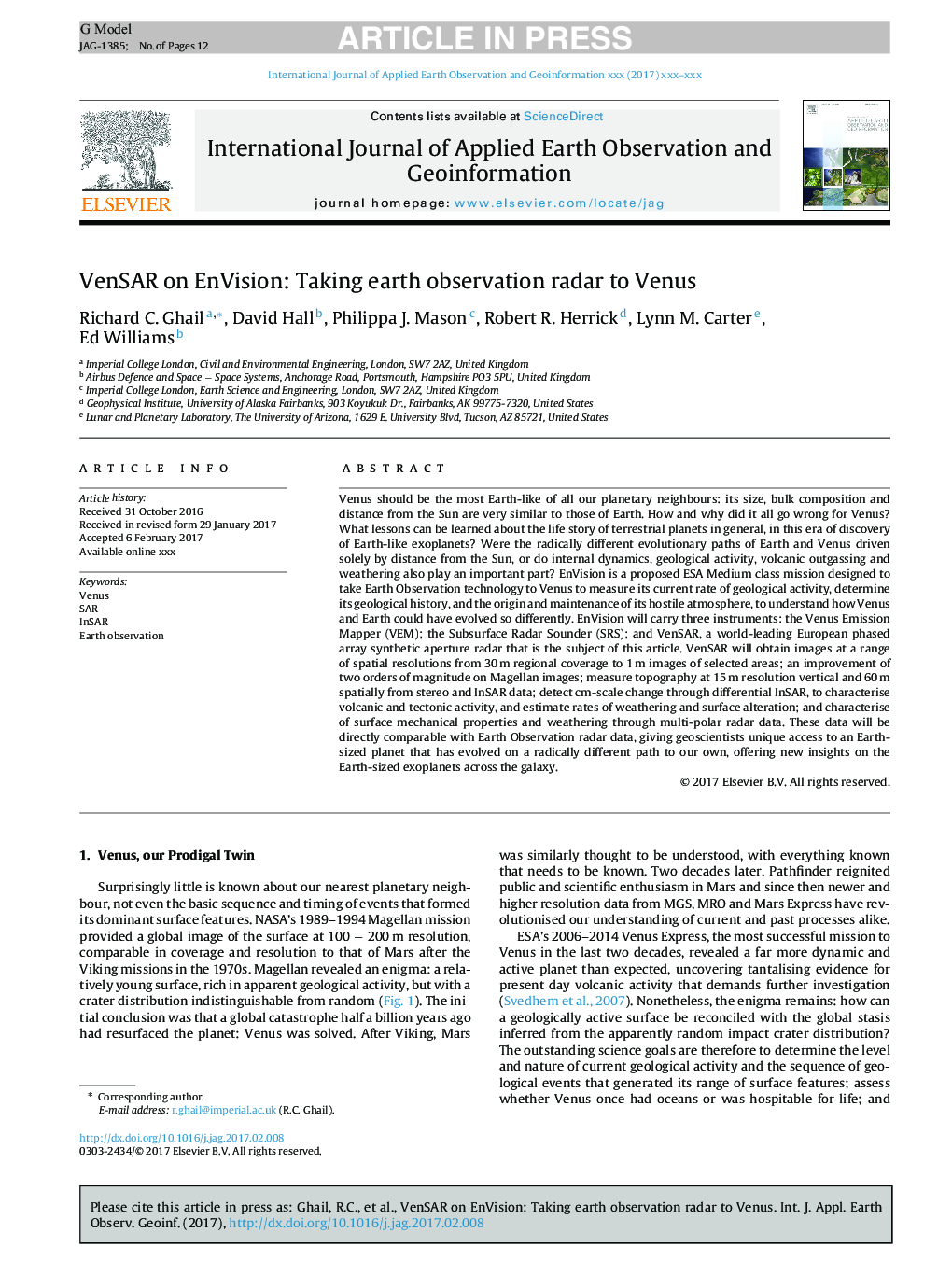| Article ID | Journal | Published Year | Pages | File Type |
|---|---|---|---|---|
| 8868064 | International Journal of Applied Earth Observation and Geoinformation | 2018 | 12 Pages |
Abstract
Venus should be the most Earth-like of all our planetary neighbours: its size, bulk composition and distance from the Sun are very similar to those of Earth. How and why did it all go wrong for Venus? What lessons can be learned about the life story of terrestrial planets in general, in this era of discovery of Earth-like exoplanets? Were the radically different evolutionary paths of Earth and Venus driven solely by distance from the Sun, or do internal dynamics, geological activity, volcanic outgassing and weathering also play an important part? EnVision is a proposed ESA Medium class mission designed to take Earth Observation technology to Venus to measure its current rate of geological activity, determine its geological history, and the origin and maintenance of its hostile atmosphere, to understand how Venus and Earth could have evolved so differently. EnVision will carry three instruments: the Venus Emission Mapper (VEM); the Subsurface Radar Sounder (SRS); and VenSAR, a world-leading European phased array synthetic aperture radar that is the subject of this article. VenSAR will obtain images at a range of spatial resolutions from 30Â m regional coverage to 1Â m images of selected areas; an improvement of two orders of magnitude on Magellan images; measure topography at 15Â m resolution vertical and 60Â m spatially from stereo and InSAR data; detect cm-scale change through differential InSAR, to characterise volcanic and tectonic activity, and estimate rates of weathering and surface alteration; and characterise of surface mechanical properties and weathering through multi-polar radar data. These data will be directly comparable with Earth Observation radar data, giving geoscientists unique access to an Earth-sized planet that has evolved on a radically different path to our own, offering new insights on the Earth-sized exoplanets across the galaxy.
Keywords
Related Topics
Physical Sciences and Engineering
Earth and Planetary Sciences
Computers in Earth Sciences
Authors
Richard C. Ghail, David Hall, Philippa J. Mason, Robert R. Herrick, Lynn M. Carter, Ed Williams,
